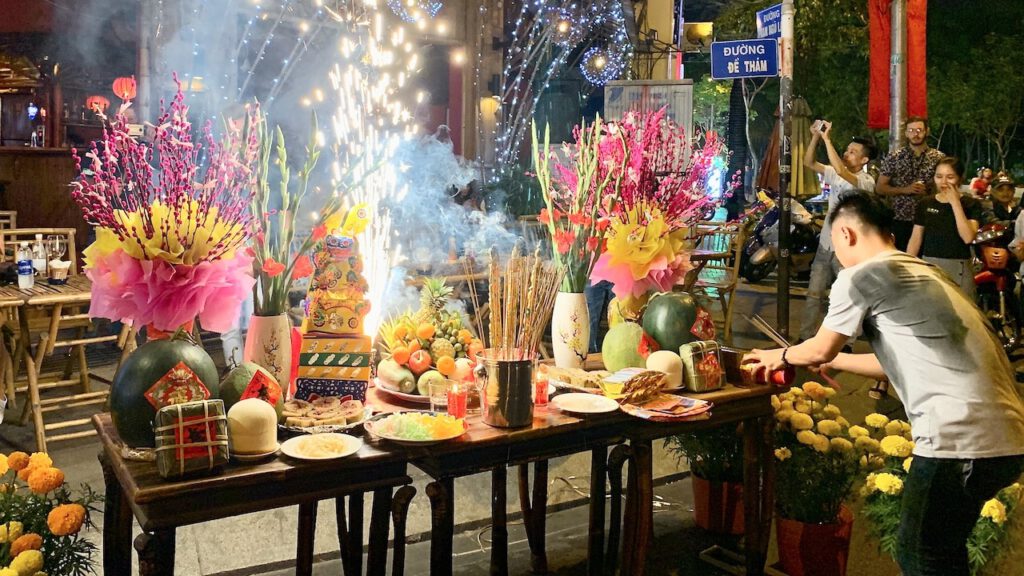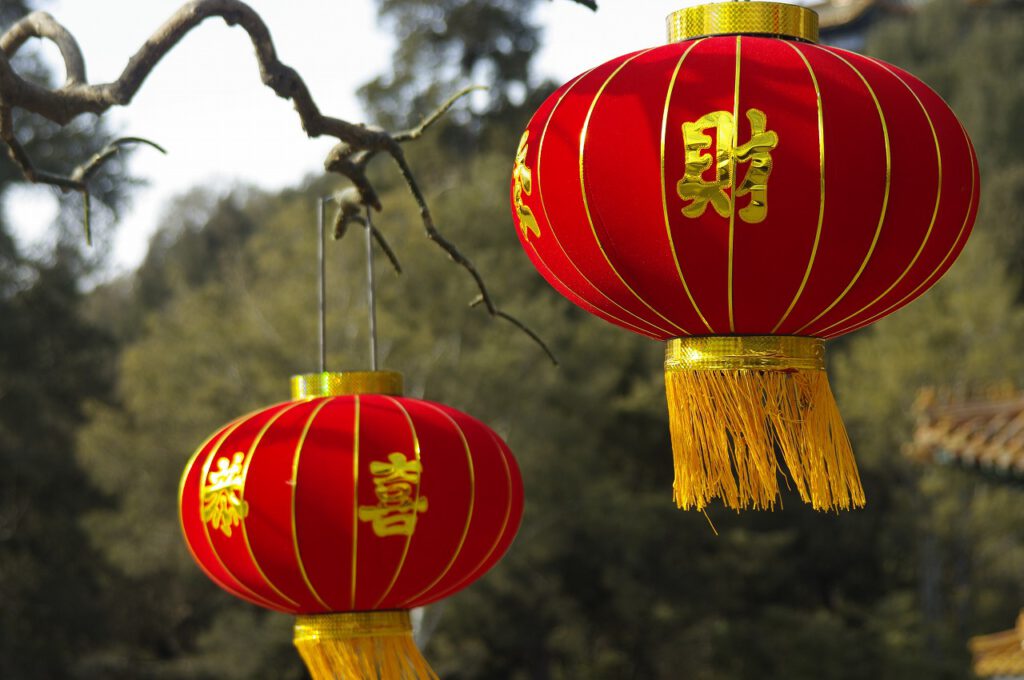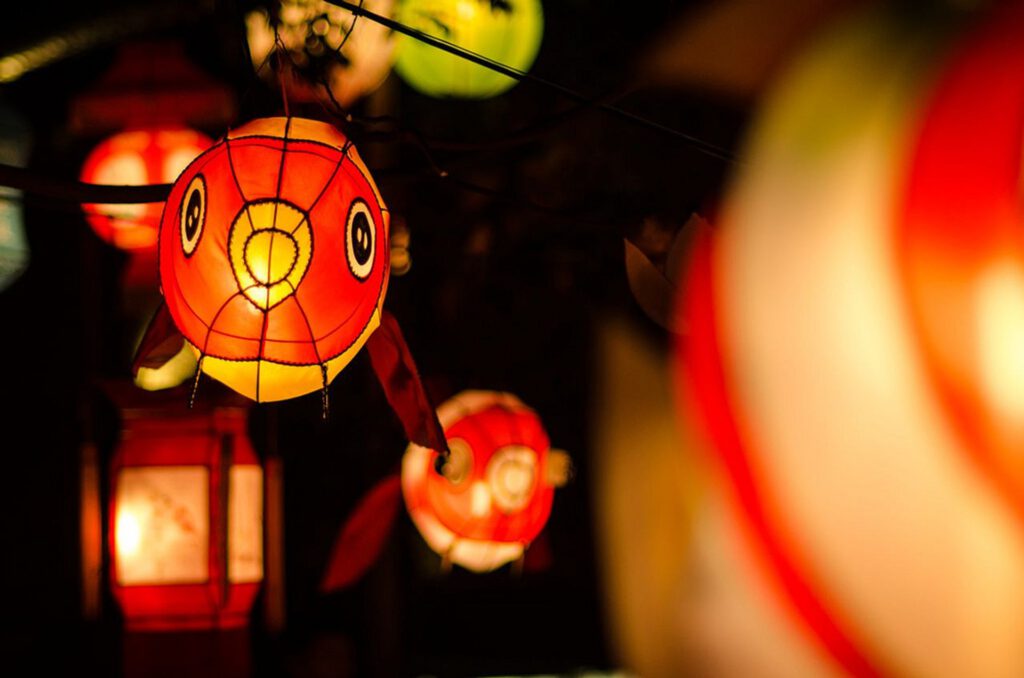
The Lunar New Year is the ultimate family celebration. Not just in China, but wherever ethnic Chinese have settled. By the hundreds of thousands in Malaysia and Indonesia, for example, where the traditions linked to this event are perpetuated; even that of the water rabbits who virtually invaded the Dan Zong temple near Jakarta!
South Korea and Vietnam have their own traditions, but they adhere to this frenzy that is taking over East Asia: everything must be clean, pretty, decorated with red, flowers, lanterns , calligraphy… The sticky rice must be soaked the day before in order to prepare the famous cake dressed in bamboo leaves! The lions and dragons are ready to enter the dance. So let’s go.

We will start with Vietnam, which opposed the water rabbit, preferring the cat. No consensus on the reason. One of them would be that a cat is more useful than a rabbit in a rice field where rats abound…
The « Tet » tree
It is the equivalent of our Christmas tree in Vietnam. It consists of a large clump of branches of either pink-flowered peach (in Hanoi and the north) or yellow-flowered apricot in the south.

They are lined with red envelopes containing the gifts of the children. Peach or apricot blossoms also adorn the Altar of the Ancestors. Their cult is millennial. According to tradition, the first day of the year is the only day of the year when the dead return to earth. The family is there around the altar where incense sticks are burning to receive them.
South Korea
Beneath its air of modernity, society remains very hierarchical and attached to traditions. That of the “hanbok”, the traditional dress (female and male models) which has become trendy is increasingly popular. Young adults and children wear it when they kneel before their elders to present their wishes. Red envelopes with gifts, then board games… Koreans love these moments which are truly part of the tradition. Like” Teeokguk”, this a beef-based soup topped with sticky rice cakes.

Lions and dragons
Rythmed by drums, gongs, cymbals, they are part of all the festivals in East Asia. Usually conveyed by martial arts enthusiasts, they are capable of all feats. The lion has a special meaning for Buddhists, because it symbolizes Bodisattva, a wise being endowed with great inner strength. If he shows great ferocity like his friend, the dragon, it is to scare away evil spirits; its strength is perceived as beneficent.
The longer the dragon, the more athletes capable of acrobatics it requires. Because you have to make it jump, undulate, contort using the poles they handle. These dances are among the most popular festivities.

Red, the envelopes!
Beautifully decorated, carrying wishes in Chinese or other characters, they are a must at this time of year; but they also appear in other circumstances, a marriage, for example. The procedure is quite strict: the envelope can only contain new banknotes; never a number 4 (its pronunciation is too close to that of the word SI, “death”…); the number 8 is welcome because it evokes prosperity. The envelope is given and received with two hands; you don’t open it right away or in front of other people… A practice is spreading, however, which risks ruining this tradition: sending money via a virtual Red Envelope on your smartphone. Oh yes.



